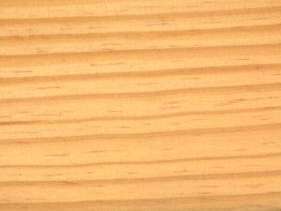
Scrub pine (Pinus virginiana)
Family: Betulaceae
Common names: Jersey pine, Pine, Scrub pine, Southern pine, Virginia pine
Distributed in: United States (North America)
Distribution overview: This species occurs from southeastern New York south to northeastern Mississippi, and north to southern Indiana. It is common in abandoned fields as a pioneer species after grasses on the Piedmont hills, and grows rapidly to form thickets. It prefers clay, loam, and sandy loam on well-drained sites. It forms pure stands, and can do well even in poor or severely eroded soils. It is also found in mixed forest types, and grows from sea level to an altitute of 100 to 2500 feet (30 to 762 m).
Product sources: The primary commercial southern pine, Lololly pine is among the fastest growing of the southern pines, and is widely planted in forest plantations for pulpwood and lumber.
Environment profile: Widespread, abundant and globally secure
Tree size: Tree height is 30-40 m
Colors: the heart isRed, Yellowand the sapwoodWhitish
.The grain isStraight, the textureMedium
Natural durability: Resistant to powder post beetles, Susceptible to insect attack
Kiln Drying Rate: Naturally dries quickly
Drying Defects: Splitting
Ease of Drying: Rapidly
Blunting Effect: Moderate blunting effect on cutting edges
Cutting Resistance: Resin exudation may gum up sawteeth
Gluing: Good gluing properties
Nailing: Fairly Easy to Very Easy, Good nail holding properties
Planing: High resin content may be troublesome since cutters tend to gum up
Resistance to Impregnation: Fairly difficult to treat with preservative chemicals
Response to hand tools: Fair response to hand tools
Sanding: Good sanding properties
Steam bending: Rather poor steam bending qualitites due to high resin content
Screwing: Fairly Easy to Very Easy, Good screw holding properties;
Painting: Satisfactory painting properties
; Polishing: Fairly satisfactory finishing treatments ; Staining: Stains well; Varnishing: Responds satisfactorily to most finishing treatments
;
- Numerical data Metric
- Numerical data English
- Strength properties
- References
 |
 |
 |
 |
| Item |
Green |
Dry |
Metric |
| Specific Gravity |
0,42 |
0,43 |
|
| Density |
|
|
kg/m3 |
| Bending Strength |
502 |
895 |
kg/cm2 |
| Crushing Strength |
62 |
97 |
kg/cm2 |
| Hardness |
|
328 |
kg |
| Impact Strength |
83 |
78 |
cm |
| Shearing Strength |
|
93 |
kg/cm2 |
| Stiffness |
84 |
104 |
1000 kg/cm2 |
| Tangential Shrinkage |
7 |
|
% |
| Radial Shrinkage |
4 |
|
% |
| Weight |
|
|
kg/m3 |
| Maximum Load |
|
|
cm-kg/cm3 |
| Toughness |
|
|
cm-kg |
| Static Bending |
|
|
kg/cm2 |
|
 |  |  |  | | Item | Green | Dry | English | | Bending Strength | 7154 | 12740 | psi | | Crushing Strength | 892 | 1385. | psi | | Hardness | | 725 | lbs | | Impact Strength | 33 | 31 | inches | | Maximum Crushing Strength | 3352 | 6576 | psi | | Shearing Strength | | 1323 | psi | | Stiffness | 1196 | 1490 | 1000 psi | | Specific Gravity | 0.42 | 0.43 | | | Radial Shrinkage | 4 | | % | | Tangential Shrinkage | 7 | | % | | Volumetric Shrinkage | 12 | | % | |
High bending strength in air-dry condition (about 12% moisture content)
Hardness = medium
Compression strength (parallel to grain) = high
Boone, R.S., C.J. Kozlik, P.J. Bois and E.M. Wengert. 1988. Dry Kiln Schedules for Commercial Woods: Temperate and Tropical. United States Department of Agriculture, Forest Service, Forest Products Laboratory, General Technical Report FPL-GTR-57, Madison, Wisconsin.Little, E.L.1980.The Audubon Society Field Guide to North American Trees - Eastern Region.Published by Arthur A. Knopf, New York.Mirov, N.T. 1967. The Genus PINUS. The Ronald Press Company, New York. LCC Card No. 67-14783.USDA. 1987. Wood Handbook - Wood as an Engineering Material, Forest Service, Agriculture Handbook No. 72, Forest Products Laboratory, Madison, Wisconsin.USDA. 1988. Dry Kiln Operators Manual, Preliminary Copy. Forest Service, Forest Products Laboratory, Madison, Wisconsin.
|








